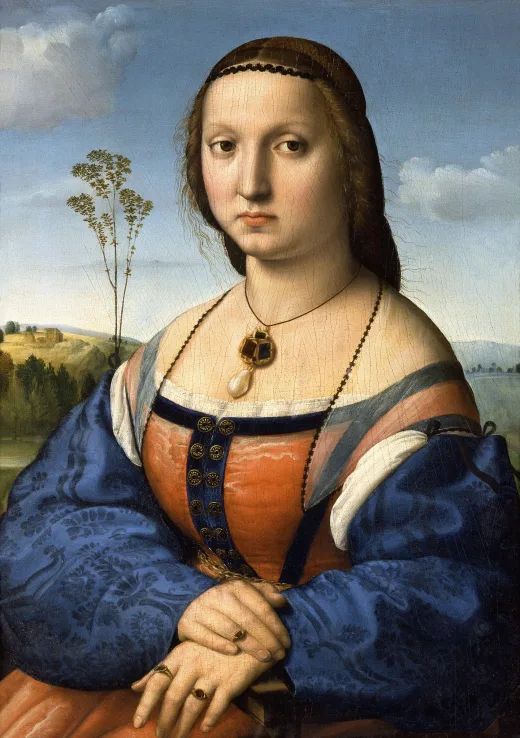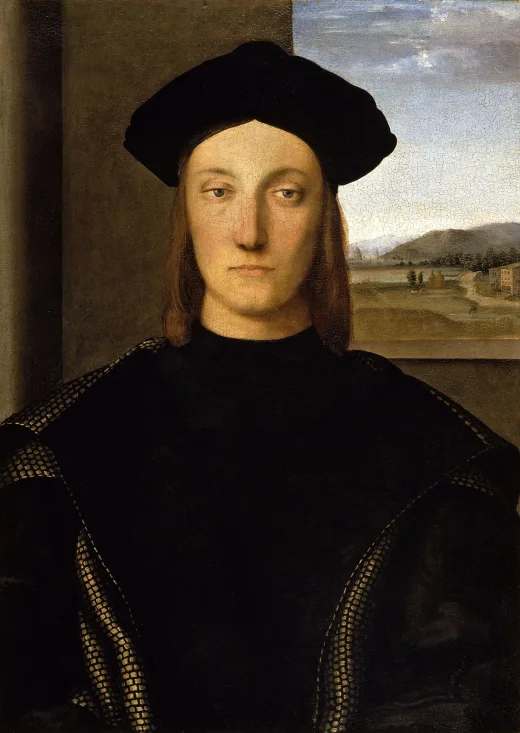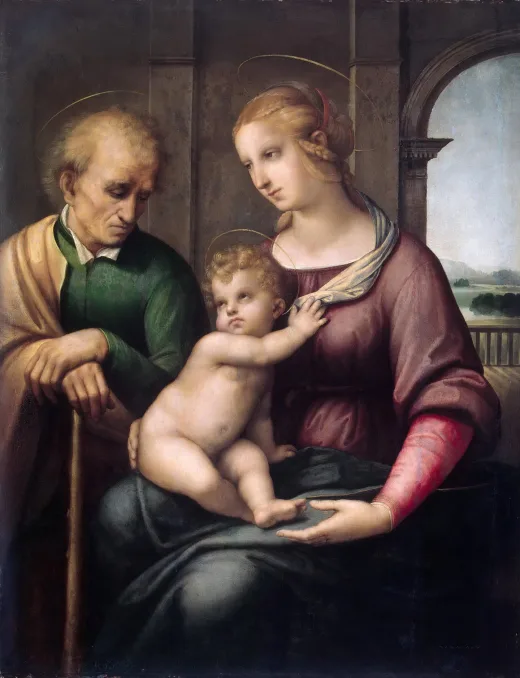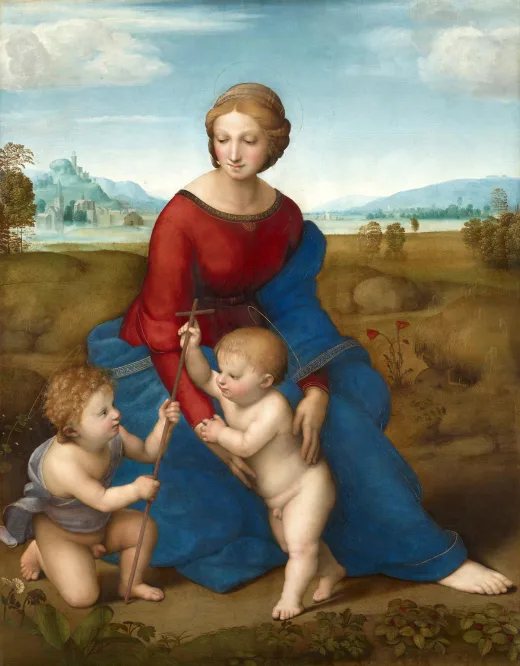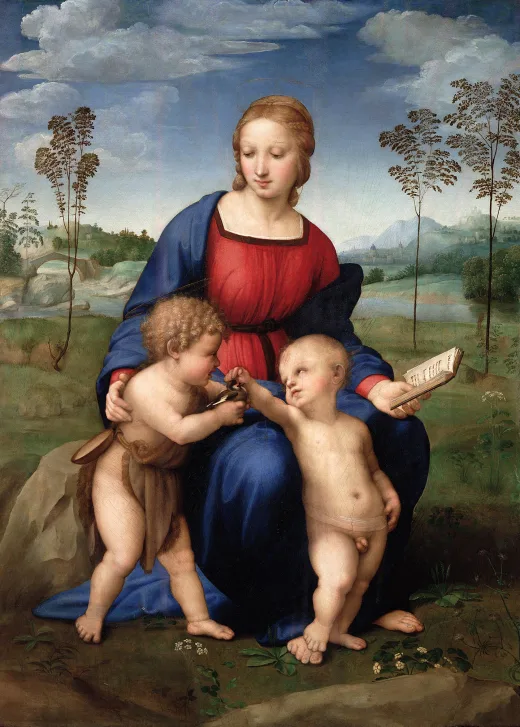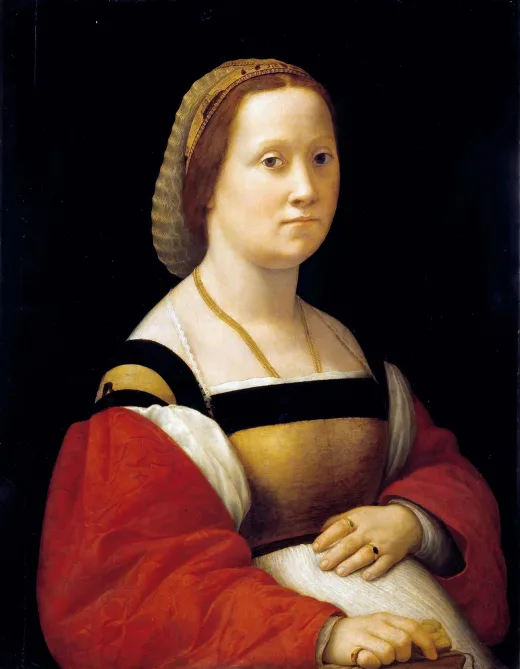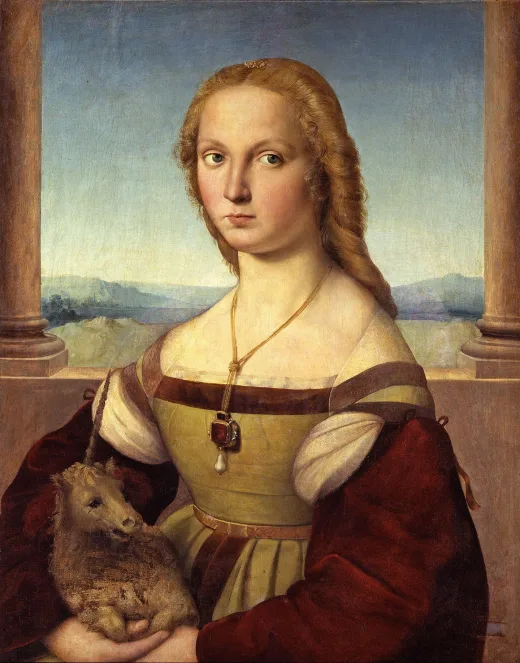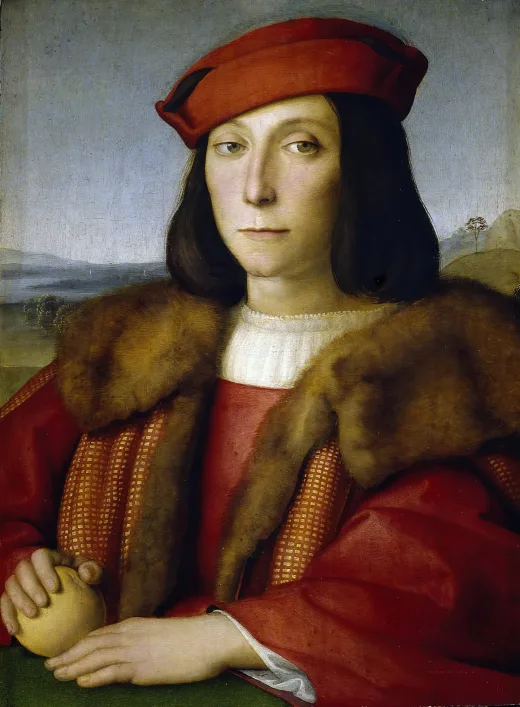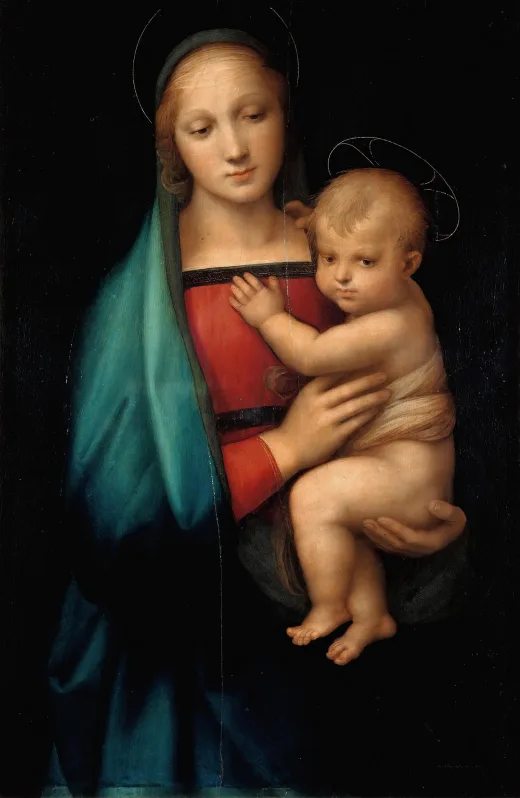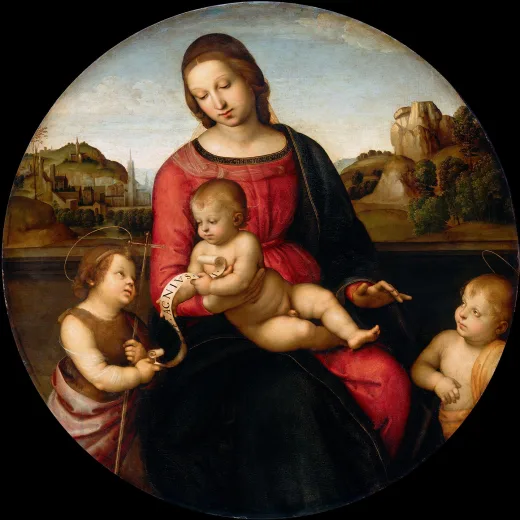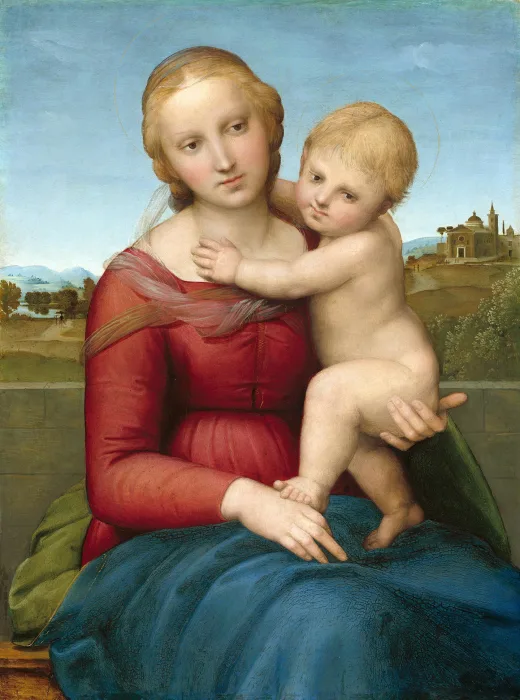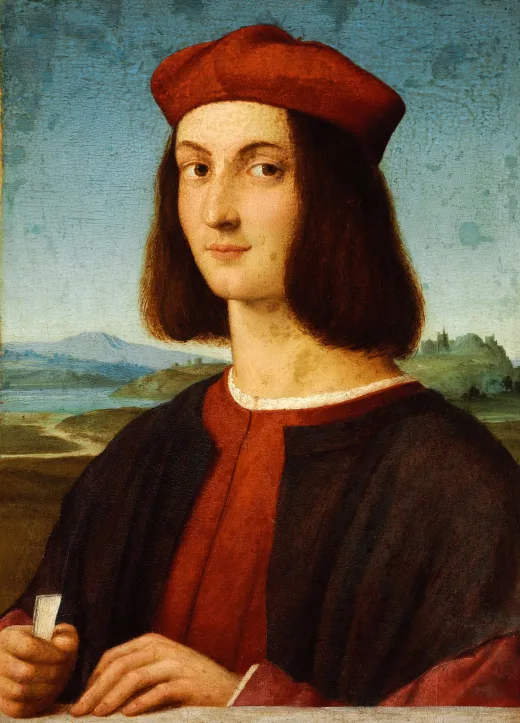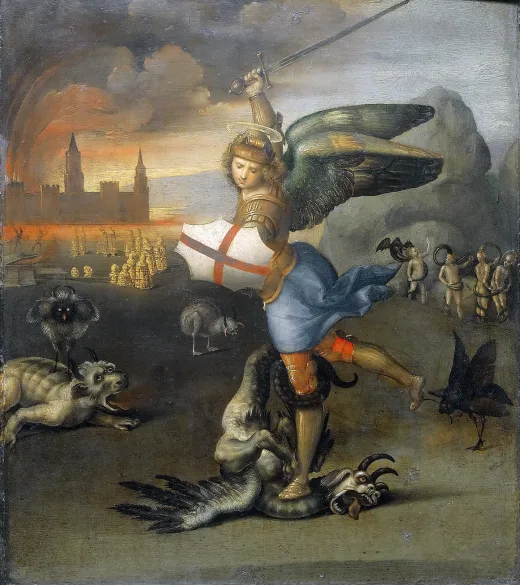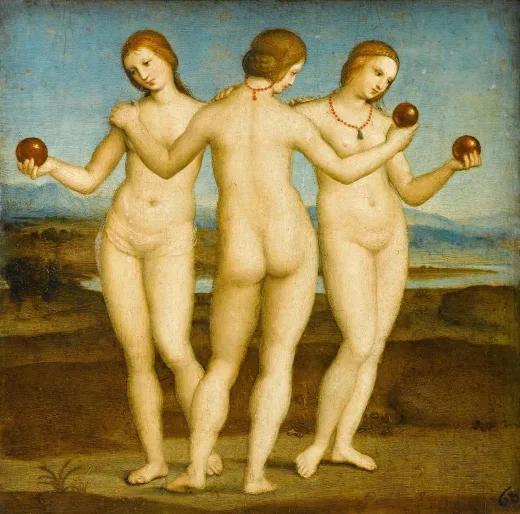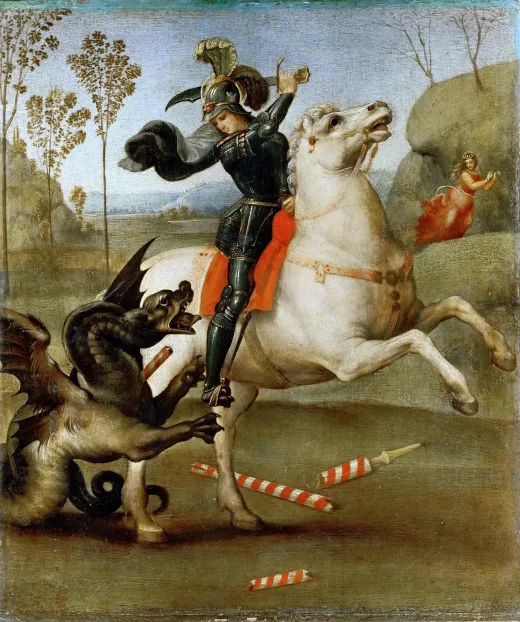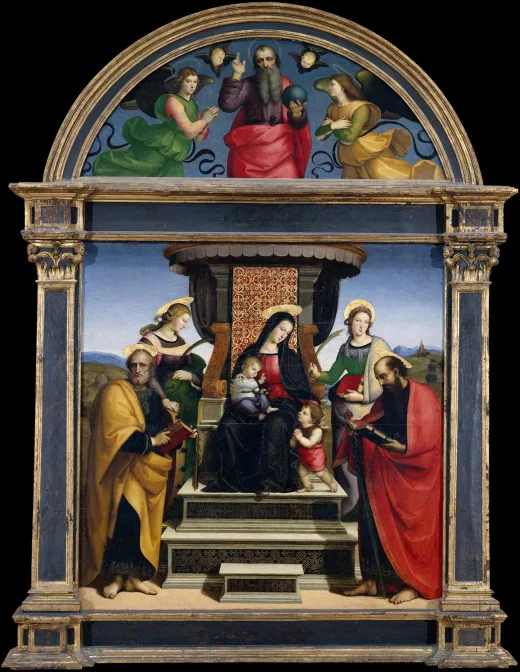拉斐尔油画人物肖像《阿尼奥洛·多尼肖像》高清图片
原图尺寸:5366×7674像素(350 DPI)高清图
下载原图消耗3艺点
文件大小:39.54 MB
下载格式: JPG / ZIP
作品名称:阿尼奥洛·多尼肖像
Portrait of Agnolo Doni
作品作者:拉斐尔(Raphael)
创作时间:约1506年
作品风格:文艺复兴盛期
原作尺寸:63×45厘米
作品材质:木板油画
收藏位置:佛罗伦萨乌菲齐美术馆
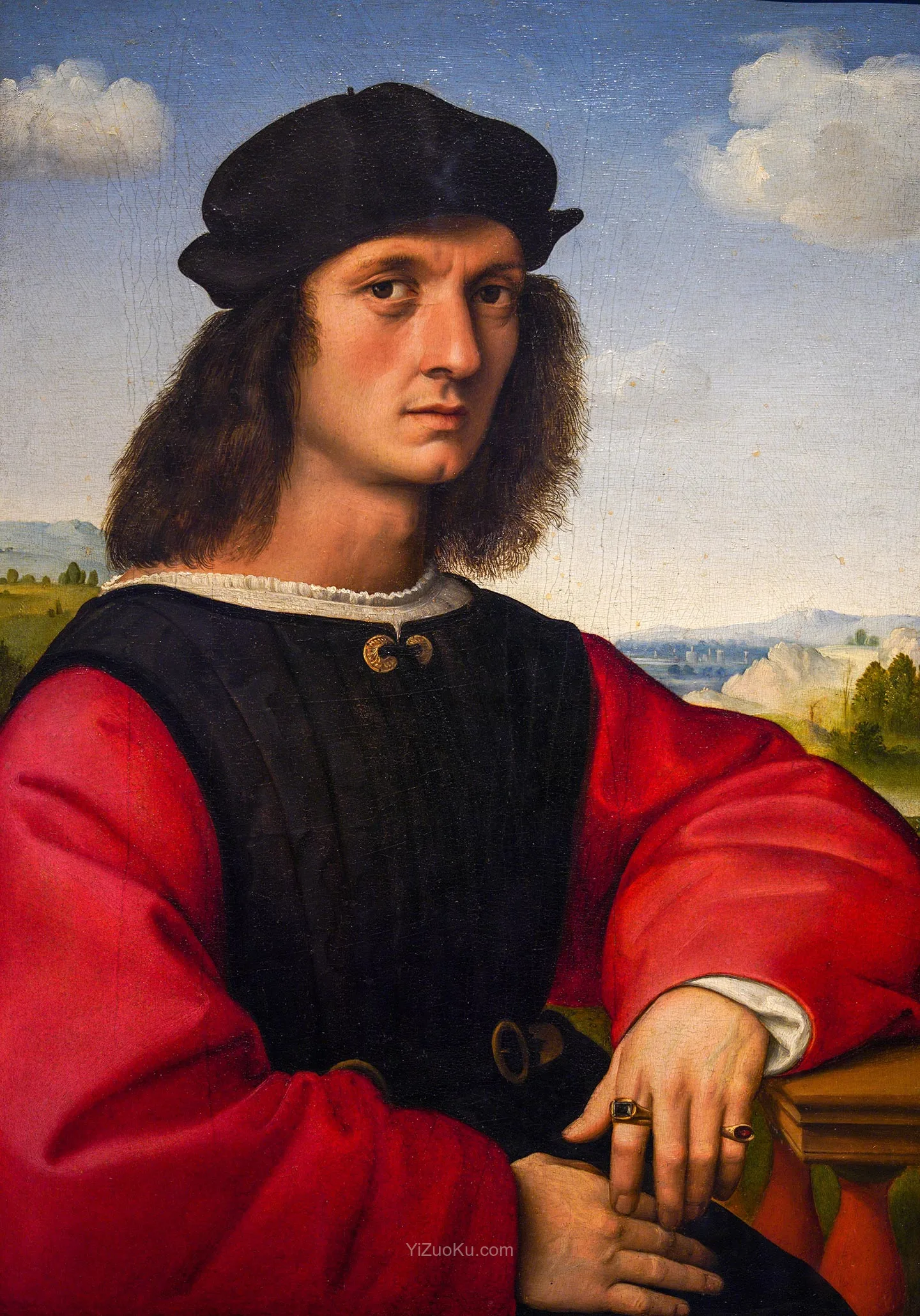
作品简介
《阿尼奥洛·多尼肖像》是意大利文艺复兴大师拉斐尔约1506年创作的木板油画,现藏于佛罗伦萨乌菲齐美术馆。
该肖像是一组新婚商人夫妇肖像画中的一幅。另外一幅为《马达莱娜·多尼肖像》。阿尼奥洛·多尼于1503年迎娶马达莱娜·斯特罗齐,但拉斐尔的肖像很可能创作于1506年,当时画家正深入研习达芬奇的艺术。肖像构图与《蒙娜丽莎》相似:人物在画面中的位置关系相同,双手交叠的姿势也如出一辙。然而低地平线的风景背景通过均匀的光线清晰地勾勒出人物的形体轮廓,这种人物与风景的关系与达芬奇笔下自然景观的压迫感形成鲜明对比。
这些肖像与达芬奇作品最显著的区别在于其整体宁静的气质,即便对服饰与珠宝(暗示夫妇财富)的精细刻画也未能减损这种氛围。每个元素——即便是次要细节——都共同营造出精准的平衡感。
这些作品不仅通过描绘对象产生关联,更以其鲜明的风格一致性,标志着拉斐尔艺术成熟期的开端。
The Portrait of Agnolo Doni is an oil painting on wood by Italian Renaissance master Raphael, executed c. 1506. It is now in the Uffizi in Florence.
The portrait is one of a pair that depict a recently married merchant and his wife. Agnolo Doni married Maddalena Strozzi in 1503, but Raphael's portraits were probably executed in 1506, the period in which the painter studied the art of Leonardo da Vinci most closely. The composition of the portraits resembles that of the Mona Lisa: the figures are presented in the same way in respect to the picture plane, and their hands, like those of the Mona Lisa, are placed on top of one another. But the low horizon of the landscape background permits a careful assessment of the human figure by providing a uniform light which defines surfaces and volumes. This relationship between landscape and figure presents a clear contrast to the striking settings of Leonardo, which communicate the threatening presence of nature.
But the most notable characteristic that distinguishes these portraits from those of Leonardo is the overall sense of serenity which even the close attention to the materials of clothes and jewels (which draw one's attention to the couple's wealth) is unable to attenuate. Every element - even those of secondary importance - works together to create a precise balance.
These works, linked not only by the kinship of the subjects, but also by their evident stylistic homogeneity, mark the beginning of Raphael's artistic maturity.
